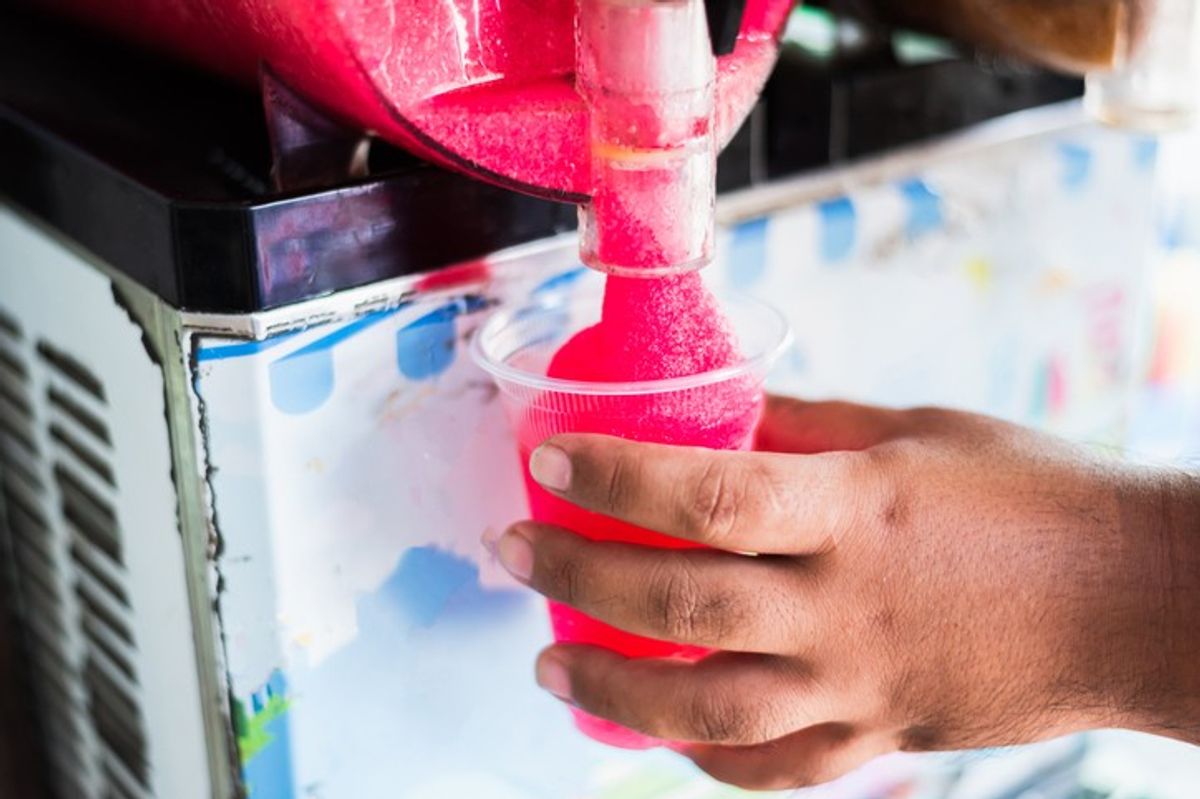Warnings have been issued against slush ice drinks by medical researchers, saying that poor transparency around slush ice drink glycerol concentration makes estimating a safe dose tricky.
Public health advice on the safe consumption of glycerol-containing slush ice drinks, also known as slushees, may need revising, stated medical researchers after carrying out a detailed review of the medical notes of 21 children who became acutely unwell shortly after drinking one of these products.
Brightly coloured slush ice drinks are designed to appeal to children, note the researchers. Slush machines are becoming a common fixture in convenience stores as retailers are increasingly recognising the potential for increased foot traffic and profits.
The findings, published in the journal Archives of Disease in Childhood, show that in each case the child became acutely unwell with a cluster of symptoms soon after drinking a slush ice drink, which the researchers refer to as glycerol intoxication syndrome.
The clinical and biochemical features were similar in all of these children and included reduced consciousness, a sudden sharp drop in blood sugar (hypoglycaemia), and a build-up of acid in the blood (metabolic acidosis).
Such symptoms, when they occur together, can indicate poisoning or inherited metabolic disorders, prompting further investigations.
While the ingredients vary, most of those available in the UK and Ireland are "no added sugar” or "sugar free" products and contain glycerol (E422, also known as glycerine), they add.
Glycerol stops the ice from fully freezing, so maintaining the slush effect in the absence of a high sugar content, they explain.
With a view to informing public health policy and guidance for parents, the researchers scrutinised the medical notes of 21 children who had become acutely unwell after consuming a slush ice drink and had initially been diagnosed with hypoglycaemia after their arrival in emergency care.
According to the study, 93 per cent of the children became ill within 60 minutes while one child had a seizure.
Twenty children had documented hypoglycaemia (blood glucose 2.6 mmol/l or below); but in 13 (65 per cent) this was even lower, indicating severe hypoglycaemia.
All the children recovered quickly after initial resuscitation and stabilisation of their blood glucose and were discharged with advice to avoid slush ice drinks.
Based on some of the cases in this series, the UK Food Standards Agency recommended that young children (4 and under) shouldn’t be given slush ice drinks containing glycerol, and that those aged 10 or younger should not have more than one.
The Food Safety Authority of Ireland (FSAI) followed suit with similar guidance in 2024.
But the researchers believe that these recommendations may no longer be enough.
“There is poor transparency around slush ice drink glycerol concentration; estimating a safe dose is therefore not easy.
"It is also likely that speed and dose of ingestion, along with other aspects, such as whether the drink is consumed alongside a meal or during a fasting state, or consumed after high-intensity exercise, may be contributing factors,” they write.
“Food Standards Scotland and the FSAI suggested that 125 mg/kg of body weight per hour is the lowest dose that is associated with negative health effects.
"For a toddler this may equate to 50–220 ml of a slush ice drink. The standard size drink sold in the UK and Ireland is 500 ml,” they point out.
Given that these drinks don’t confer any nutritional or health benefits, “recommendations on their safe consumption therefore need to be weighted towards safety,” they suggest.
“To ensure safe population-level recommendations can be easily interpreted at the individual parental level, and given the variability across an age cohort of weight, we suggest that recommendations should be based on weight rather than age.
"Alternatively, the recommended age threshold may need to be higher (eight years), to ensure the dose per weight would not be exceeded, given normal population variation in weight," mentions the report.





